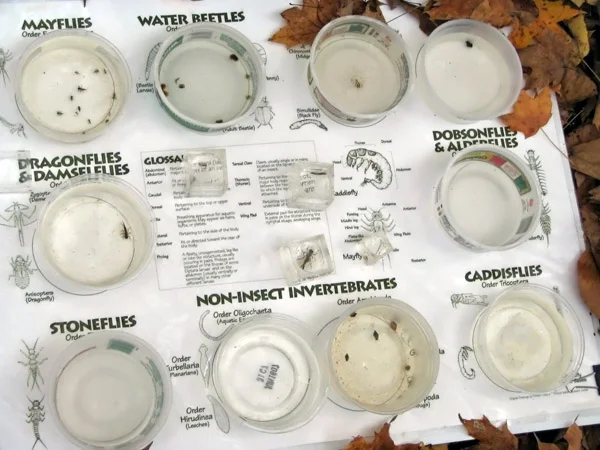Introduction to Watersheds - Recommended for Grades 4 - 6
Recommended for 4th - 6th grade students. This high-energy, one-hour classroom program serves as an active introduction to watershed concepts. Using topographic maps, a large floor map of the Perkiomen Creek Watershed, “survivor challenges”, and their current knowledge base, students will develop an understanding of what a watershed is and how its boundaries are determined, and why "what you do to the land, you do to the water". Students will identify major tributaries of the Perkiomen Creek, find out who lives in a watershed, and discover their own “watershed address”.
Fee:
* $160.00 per class of up to 24 students plus a $10 Travel & Transportation fee per class when held at your classroom
* $8.00 per student when held at the Conservancy ($80 minimum per class)
For more information or for reservations contact: PWC Education Department at education@perkiomenwatershed.org
What the teachers are saying:
“The entire program was fantastic! The energy, the relevancy, and the hands-on activities were highly engaging. The flow map was tremendous.”
- 5th Grade Teacher, Lower Salford Elementary
PDE Academic Standards covered by this lesson include:
3.3.6.A1 - Recognize and interpret various mapping representations of Earth’s common features.
3.3.6.A4 - Describe how water on earth cycles in different forms and in different locations, including underground and in the atmosphere.
4.2.6.C - Identify natural and human-made factors that affect water quality.
4.1.5.B - Explain the basic components of the water cycle
4.5.5.C - Explain the difference between point and non-point source pollution.
4.1.4.E - Explain that ecosystems change over time due to natural and/ or human influences.
4.2.4.A - Describe the physical characteristics of a watershed. Identify and explain what determines the boundaries of a watershed. Identify water systems and their components as either lotic or lentic.
4.3.4.A - Identify ways humans depend on natural resources for survival.
4.5.4.C - Describe how human activities affect the environment.
4.5.4.F -Distinguish between scientific fact and opinion. Ask questions about objects, organisms and events. Understand that all scientific investigations involve asking and answering questions and comparing the answer with what is already known. Plan and conduct a simple investigation and understand that different questions require different kinds of investigations. Use simple equipment (tools and other technologies) to gather data and understand that this allows scientists to collect more information than relying only on their senses to gather information. Use data/evidence to construct explanations and understand that scientists develop explanations based on their evidence and compare them with their current scientific knowledge. Communicate procedures and explanations giving priority to evidence and understanding that scientists make their results public, describe their investigations so they can be reproduced and review and ask questions about the work of other scientists.
4.2.3.A - Define the term watershed. Identify the watersheds in which you reside.







